Colchicum autumn: description, varieties, planting and care
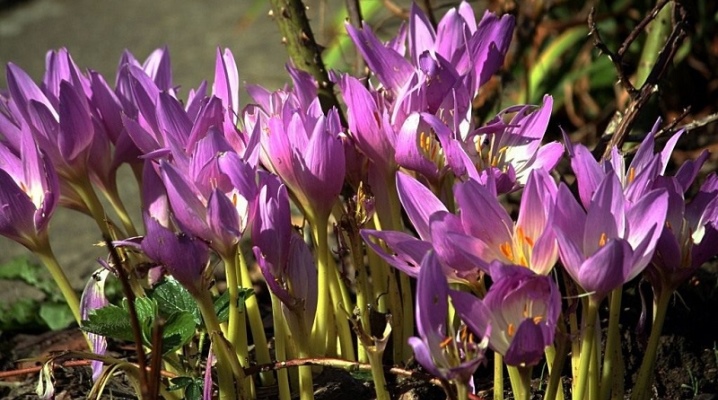
The autumn crocus produces flower stalks when most crops have already faded and are preparing for winter. Therefore, it is included in all-season flower beds to provide the flower beds with autumn bloom. Delicate flowers look amazing when the ground is already covered with frost.
A miracle plant can be grown in your garden without much effort, since it is unpretentious and does not need special care.
Peculiarities
Colchicum autumn is a perennial herbaceous bulbous plant. It has a second Latin name, Colchicum autumnale. Natural habitat - southwestern Russia, the entire European territory, except for the Scandinavian countries. The flower prefers to grow in meadows and forest edges.
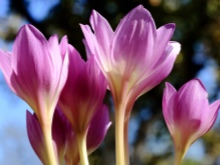
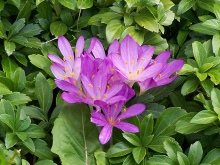
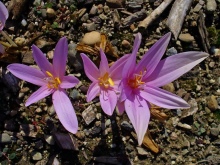
Colchicum has an amazing life cycle associated with its botanical features.
- The bulbs remain below the surface of the soil in winter. An adult tuber 7X3 cm in diameter has an oblong shape, covered with scales, which gather in a tube in the upper part.
- With the onset of spring, large juicy leaves with a beautiful shine, as if watered with wax, come to the surface. They have an elongated shape and are collected in a root socket. Even without flowers, the flowerbed looks attractive, the bright green mass pleases the eye from April to June, then the foliage withers and dries up completely until autumn.
- The seed capsule with pollinated ovaries develops in the bulb, hibernating under the ground, in the spring it comes to the surface following the leaves, which is not typical for most plants. Outwardly, the fruit is egg-shaped with a pointed top. The fruit is 3 to 5 cm long. It contains round brown seeds 2.5 mm in diameter. As soon as the capsule turns brown, it is cut off and left to dry, then the seeds are removed.
- All summer, the crocus stays in a state of fading, during this period the bulbs are gaining strength, preparing for flowering.
- The autumn crocus begins to bloom from the end of August and does not fade until the cold weather. Each variety has its own time frame, some species bloom before the first snow. The peduncle grows up to 25 cm, it ends in a beautiful large flower up to 8 cm in diameter, the color of which is varied: pinkish, snow-white, lilac, lilac, with expressive veins and blotches. The flowers resemble bells with bent petals. One bulb can produce 1 to 3 inflorescences.
It should be remembered that all parts of colchicum contain alkaloids and are poisonous. It is not recommended to plant this plant in gardens where small children play. Any work with crocus must be carried out with gloves.
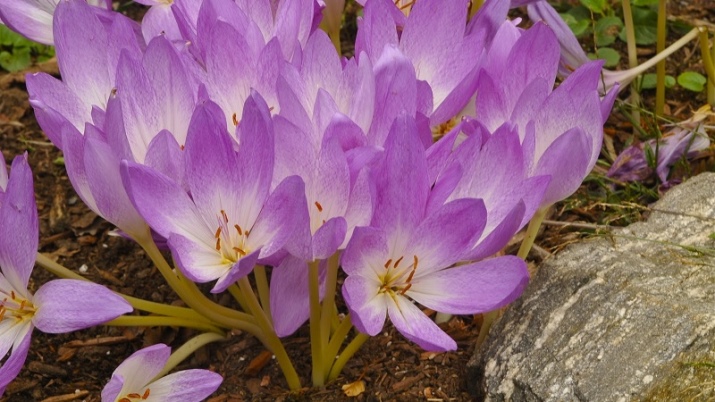
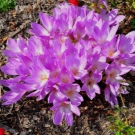
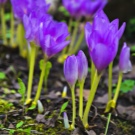

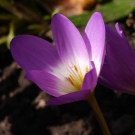

Varieties
The autumn crocus can be called a classic variety. On its basis, many decorative hybrids have been bred, surprising with their shapes and colors: wavy, terry. Most species of colchicum bloom in autumn, but there are also spring flowers that delight with their beauty with the onset of warmth. We suggest that you familiarize yourself with the description of the most popular varieties.
- Colchicum autumnale (autumn). Grows in central and southern Europe. Leaves and fruits appear immediately after the snow melts. The bush grows up to 40 cm. The leaves wither by June. The plant wakes up in September, releasing bell-shaped flowers of a pink hue.
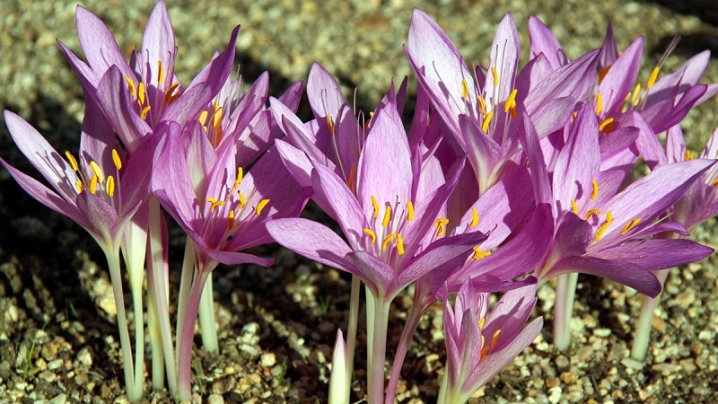
- Colchicum bornmuelleri (Bornmüller). Grows in the mountain ranges of Asia Minor. Endowed with elongated leaves (up to 35 cm) and flowers resembling the shape of a lily.It blooms until the very frost with a delicate purple color. Prefers sunny places without shade.
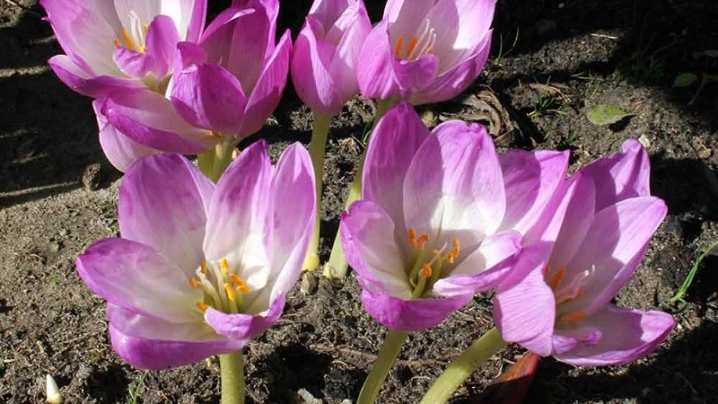
- Colchicum buzantinum (Byzantine). Distributed in southern Europe, in the Mediterranean region. In the spring it releases lanceolate leaves up to 30 cm long. At the end of August, a powerful bulb forms up to 12 purple-colored buds. The plant remains blooming until frost.

- Colchicum magnificent - Colchicum speciosum. The most popular of all types of crockworms, it has leaves 0.5 m in length. Autumn bloom is characterized by the presence of 1, 2 or 3 large lilac flowers up to 15 cm in diameter.
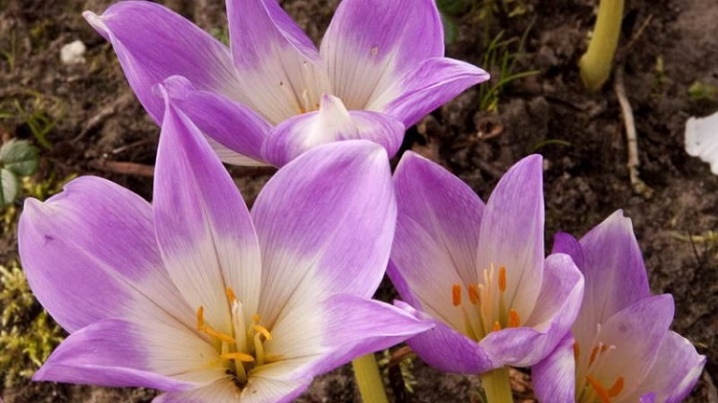
- Colchicum agrippinum (Agrippa). This variety has unusual purple flowers decorated with staggered spots. Inside, the flowers have red strokes, purple strokes. In addition to inflorescences, the variety is distinguished by long leaves with a wavy edge.
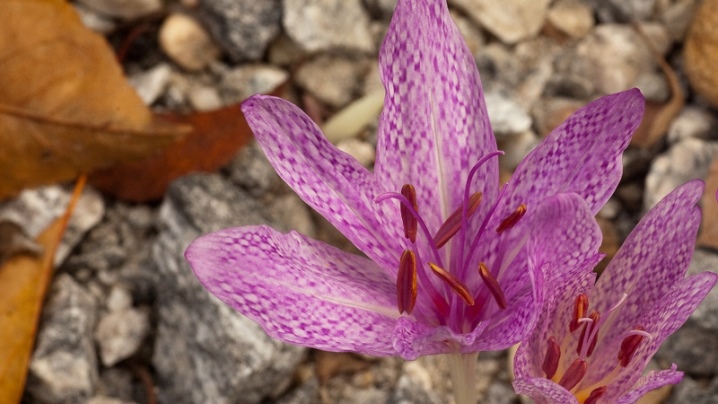
- Colchicum cilicicum (Cilician). The tall plant - about 59 cm - grows within the borders of Turkey. Blooms in late autumn, under the very frost. During flowering, the bulb produces 14 to 27 pink inflorescences with a white spot in the center.

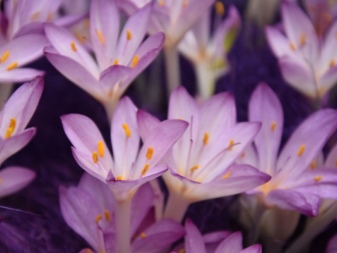
- Colchicum luteum (yellow). Grows on the slopes of meadows in the Tien Shan and Kazakhstan, at the base of melting glaciers. It blooms in spring from the beginning of ice melting until June. Single flowers of a golden hue grow on an elongated purple peduncle. The plant easily tolerates low temperatures, reproduces with the help of seeds, belongs to a rare species, it can be found in the Red Book.
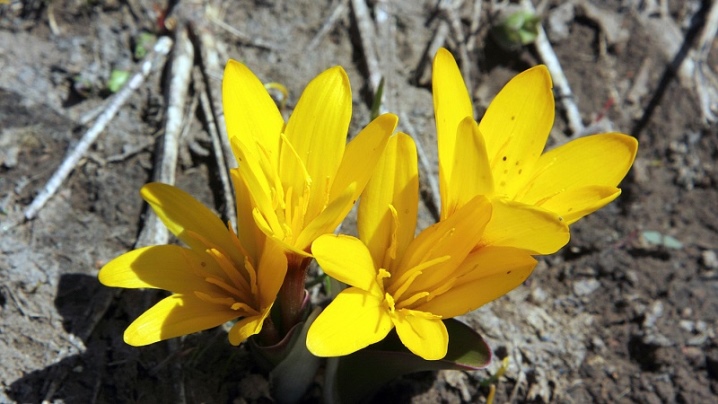
How to plant correctly?
Colchicum lends itself to growing both seeds and bulbs. However, you need to choose the right place, soil and time, which are necessary for planting the plant.
Seat selection
Colchicum grows well in the sun, but loves partial shade even more. If you plant it near the bushes, it will receive light shade and winters well, covered with foliage dropped by shrubs. Separately, flower beds for colchicum are not created, otherwise flowering will have to wait until autumn, and all summer the flower garden will look unsightly. Since the bulbs go deep into the ground, the crocus is well combined with creeping plants with fibrous rhizomes (tenacious, periwinkle). They will not interfere with each other and will ensure the flowering of the flower bed from spring to autumn.

Priming
Colchicum is unpretentious, it tolerates any soil, but in order to achieve strong juicy peduncles, you should prepare a nutrient soil, loosened and light. For this, a mixture of superphosphate is used: 1 tbsp. spoon per meter 2 and wood ash, diluted in water. Top dressing is carried out together with digging and loosening. Compost and humus are used from organic matter.
Colchicum grows poorly on marshy soils. Good drainage is essential to keep the bulbs from rotting. Heavy clay soil should be dug up with a generous addition of sand and peat.

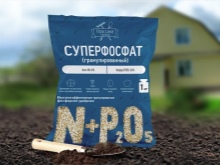
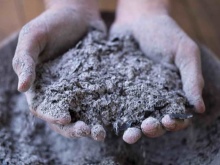
Time
Colchicum is transplanted when the bulbs are dormant, the best time to plant is August. Plants by this time are already gaining nutrients, and the largest and most developed of them can bloom in September. Weaker planting material will delight with flowering next year.
The bulbs can be transplanted after flowering, in October, but the August seedlings endure the winter easier, as they manage to get stronger before the cold weather.

Seed cultivation
Not a popular cultivation method, since it will take 5-7 years to bloom. Whoever decides on it must complete a certain landing procedure.
- Find a place and prepare the soil: dig up, loosen, feed with fertilizers.
- Immediately after collecting the seeds, it is necessary to organize their sowing (at the beginning of summer).
- After soaking for a couple of minutes, the seeds are planted in the ground to a depth of 5-10 mm. If you plant seeds in the fall or use purchased material, they should go through stratification, that is, the seeds packed in paper are sent to the refrigerator for a long time.
After planting, the seedlings are periodically watered, thinned out, weeded, and covered with spruce branches in cold winters.Seedlings may not sprout for a couple of years, but then the sprouts will still appear.
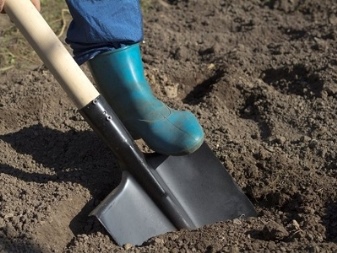
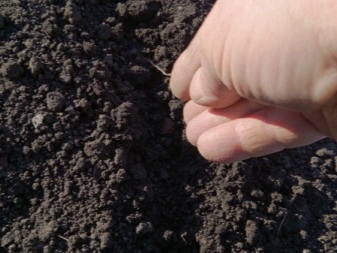
Tubers
The tubers are planted in prepared nutrient soil. Small planting material is introduced into the soil to a depth of 5–7 cm, medium - by 7–9 cm, the largest - up to 14–16 cm. The tubers should be at a distance of 16–20 cm from each other, as the crocus grows.
During the planting of the bulb, the tip of the scale tube should be left above the ground, as the tube becomes a kind of "overpass" for the sprout. If it is covered with earth, the escape will have to break through the soil. After planting colchicum, it should be watered and sprinkled with a layer of mulch to protect the soil from drying out.

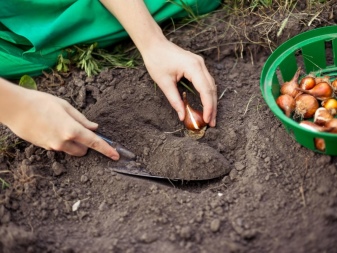
How to care?
Colchicum is unpretentious, and it is not difficult to care for it, but if you need a beautiful succulent bush with spectacular vegetation, you will have to work a little. Caring for the crocus includes several activities.
- Watering is carried out only in severe drought.
- The abundant melting of snow in the spring can damage the bulbs; drainage grooves should be made from the area with the crocus.
- Like any plant, colchicum needs weeding. Especially small bulbs that are close to the surface of the soil suffer from it.
- Spring and autumn fertilizing with nitrogen-containing mixtures will give the plant a healthy, lush appearance.
- Yellowed dry leaves and flowers are cut off only after they are completely dry.
- For the winter, the area with the crocus is covered with compost and fallen leaves, creating a warm air cushion that will help the plant not to freeze. Ornamental varieties of colchicum can be sensitive to frost; they are insulated with agrotextile or pine branches.

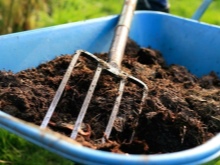

Watering
The autumn crocus does not like a lot of moisture, it can lead to rotting of the bulbs. Natural precipitation is enough for him. Only in the most severe drought is evening watering recommended. The need for watering may arise during flowering or planting.
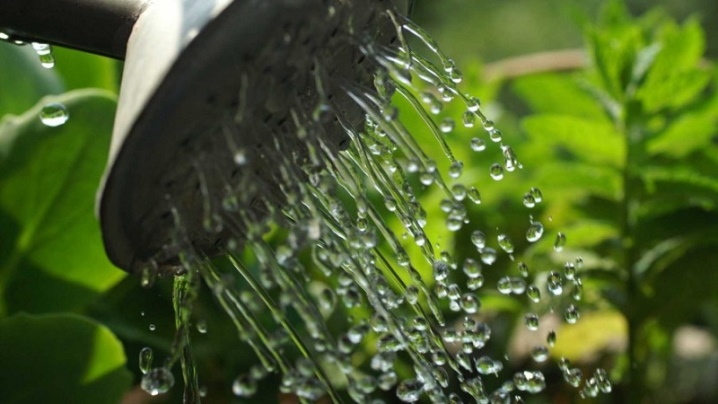
Top dressing
Fertilize the plant twice a year: in spring and autumn. In the spring, when the first leaves appear, nitrogenous compounds are introduced into the soil: urea (1 tablespoon per meter 2) or saltpeter in the same proportions. With their help, the leaves become large and juicy, and the bulbs accumulate nutrients.
In the fall, you need to add organic matter: compost with the addition of wood ash. It will help the active flowering of the plant.

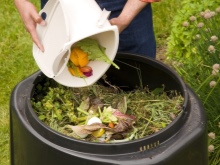
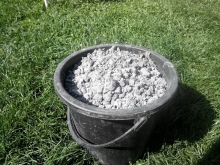
Transfer
An old overgrown bush of 4–7 years old can be painlessly dug out to transplant it into fresh nutrient soil. At this time, the mother's bulb is most likely in the stage of dying off. Knowing when to transplant a plant is easy. If a large number of leaves are concentrated in one bunch, then it is time to transplant the colchicum, otherwise it will start to hurt and will not bloom. Transplanting can be combined with reproduction by separating and planting daughter bulbs.
Plants are dug out at the turn of spring and summer, when the greenery dries up completely. The bulbs should be carefully washed, treated with a manganese composition, dried and put in the basement until August, only then the plant is transplanted separately from the daughter bulbs. If this is not done, the plantation will overgrow, the plants will quickly feel a lack of nutrients and react in the fall with weak flowering with small peduncles. The soil is enriched with humus before planting.
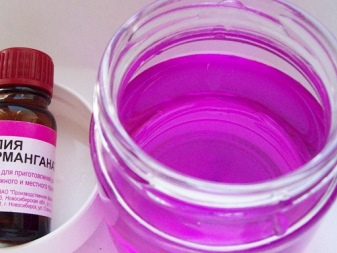
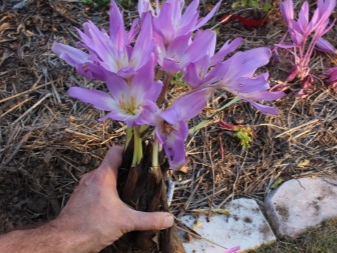
Reproduction methods
Reproduction can be done in 2 ways.
Seminal
This method involves long-term cultivation of the crop. The transformation of seeds into tiny bulbs and their growth to the size of the mother bulb, capable of producing mature flower stalks, takes place over 5-7 years. During seed propagation, the varietal characteristics of the plant are often lost. The seeds are harvested in June by cutting off the seed pods before they are completely dark and open. They will have to dry in the shade. When the capsules become brittle, seeds should be removed from them and transplanted into prepared soil.If you do not pick it up in time, and the boxes turn black on the plant, you will have to wait for the first shoots in 2-3 years.
Seedlings can be grown both outdoors and in boxes. It should be noted that there are only a few types of crockworms that lend themselves to seed reproduction:
- blooming in spring;
- having only 1 bulb (without daughter ones), for example, yellow colchicum.
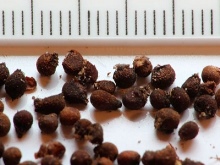
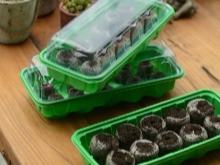
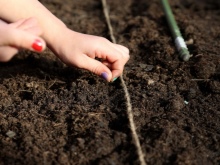
Bulbous
Vegetative propagation is widespread, involving the use of daughter bulbs. When the mother plant grows overgrown with "children", a lot of stems and leaves appear on the plant in spring, which means that the bush is ready for resettlement. You need to spot the plant and dig it up at the end of July, when the leaves will finally wither. The tubers go to a depth of 33 cm, so work very carefully so as not to damage them. Then carefully separate the tiny onions, store them in the basement for 1–1.5 months, and only then plant them.
When working with bulbs, you need to try to preserve the integumentary scales.

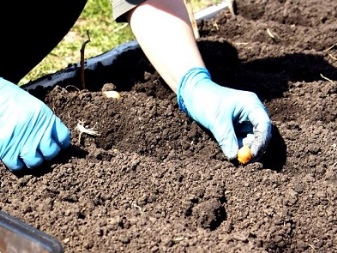
Diseases and pests
The autumn crocus is rarely affected by pests. But with an abundance of moisture and heat, the plant can become covered with gray rot. In this case colchicum is treated with fungicidal preparations (Kuprokstat, Champion). Diseased parts of the plant should be removed, the soil should be allowed to dry out and preventive spraying with the same preparations should be carried out.
Another misfortune for the crocus is the invasion of snails and slugs, they are attracted by the succulent leaves of the plant. To combat the pest, the drug "Metiocarb" is used, and "Metaldehyde" also helps. There is also a folk method. To drive out uninvited guests, they lay out broken shell rock, pebbles or eggshells around the plants, the sharp edges of which prevent pests from crawling onto healthy plants.
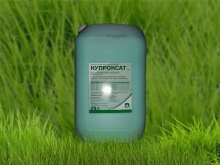

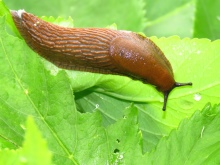
In the next video, planting and caring for the autumn crocus in the open field awaits you.







































































































The comment was sent successfully.